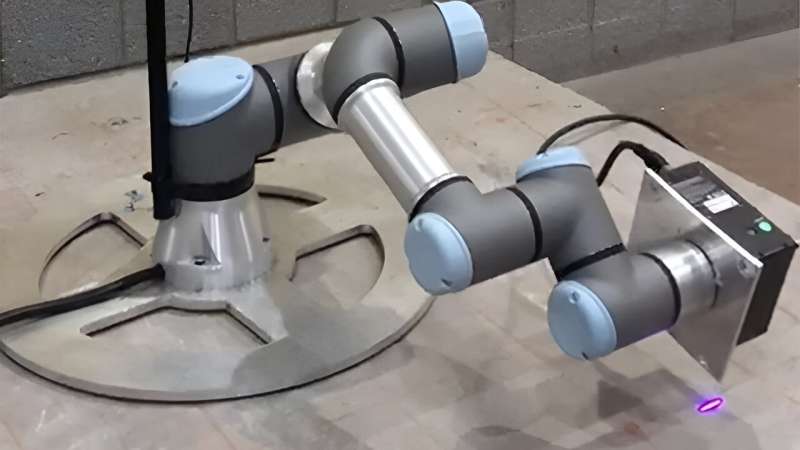
Our built environment is aging and failing faster than we can maintain it. Recent building collapses and structural failures of roads and bridges are indicators of a problem that's likely to get worse, according to experts, because it's just not possible to inspect every crack, creak and crumble to parse dangerous signs of failure from normal wear and tear.
In hopes of playing catch-up, researchers in Drexel University's College of Engineering are trying to give robotic assistants the tools to help inspectors with the job.
Augmenting visual inspection technologies—that have offered partial solutions to speed damage assessment in recent years—with a new machine learning approach, the researchers have created a system that they believe could enable efficient identification and inspection of problem areas by autonomous robots.
Reported in the journal Automation in Construction, their multi-scale system combines computer vision with a deep-learning algorithm to pinpoint problem areas of cracking before directing a series of laser scans of the regions to create a "digital twin" computer model that can be used to assess and monitor the damage.
The system represents a strategy that would significantly reduce the overall inspection workload and enable the focused consideration and care needed to prevent structural failures.
"Cracks can be regarded as a patient's medical symptoms that should be screened in the early stages," the authors, Arvin Ebrahimkhanlou, Ph.D., an assistant professor, and Ali Ghadimzadeh Alamdari, a research assistant, both in Drexel's College of Engineering, wrote. "Consequently, early and accurate detection and measurement of cracks are essential for timely diagnosis, maintenance, and repair efforts, preventing further deterioration and mitigating potential hazards."
But right now, they note, so many of the nation's buildings, bridges, tunnels and dams are among the walking wounded that the first priority should be setting up a triage system. Before the Bipartisan Infrastructure Law, the American Society of Civil Engineers estimated a backlog of $786 billion in repairs to roads and bridges. Adding to the challenge is a growing shortage of skilled infrastructure workers—including inspectors and those who would repair aging structures.
"Civil infrastructures include large-scale structures and bridges, but their defects are often small in scale," Ebrahimkhanlou said. "We believe taking a multi-scale robotic approach will enable efficient pre-screening of problem areas via computer vision and precise robotic scanning of defects using nondestructive, laser-based scans."
Instead of a physical measurement interpreted subjectively by human eyes, the system uses a high-resolution stereo-depth camera feed of the structure into a deep-learning program called a convolutional neural network. These programs, which are being used for facial recognition, drug development and deepfake detection, are gaining attention for their ability to spot the finest of patterns and discrepancies in massive volumes of data.
More information: Ali Ghadimzadeh Alamdari et al, A multi-scale robotic approach for precise crack measurement in concrete structures, Automation in Construction (2023). DOI: 10.1016/j.autcon.2023.105215
Citation: Researchers propose AI-guided system for robotic inspection of buildings, roads and bridges (2024, January 30) retrieved 30 January 2024 from https://techxplore.com/news/2024-01-ai-robotic-roads-bridges.html
This document is subject to copyright. Apart from any fair dealing for the purpose of private study or research, no part may be reproduced without the written permission. The content is provided for information purposes only.
